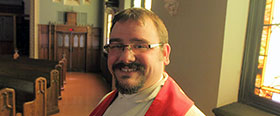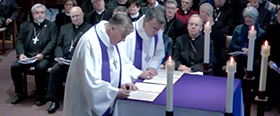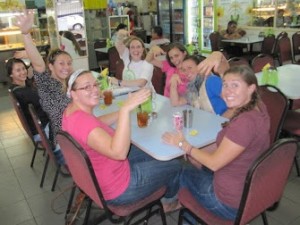The Rev. Peter Harrits, an ELCA missionary in Malysia, is also the regional Young Adults in Global Mission (YAGM) coordinator. He reflects here on the YAGM group he has worked with for the past year as the young adults end their service. The YAGM program relies on coordinators like Peter who facilitate the young adults’ ministry and provide mentoring and spiritual guidance. To support a YAGM coordinator, go to www.elca.org/missionarysponsorship.
Stories of happiness and friendship. Stories of regret and remorse. Stories of success and failure, of significant gains and losses. Stories trying to make sense of a year immersed in the other. Recalling, remembering and reliving their experiences, these storytellers crafting them into tales for the uninitiated — those who have not been and do not know. This is holy, difficult work.
In the Gospel of Luke, messengers from John the Baptist leave the familiar environment of their community and spend time with this Jesus character. They arrive weighed down with loaded questions from John and those who sent them. What are they to make of this man who had cured people of diseases, plagues and evil spirits? They ask, “Are you the one who is to come, or are we to wait for another?” Jesus’ response is simple, “Go and tell John what you have seen and heard … .”
During their time in Sabah, I don’t know that the young adults I accompany witnessed the blind or deaf being restored, lepers being cleansed, or the dead being raised (you’d think somebody would’ve told me if that happened!), but I do know that they have seen and heard many things: things Internal and External, thing about the World and Society, about Culture and People, about Faith and God. As they start to return home, they are telling tales of getting lost in new cultures, of facing failure, of relationships that transformed them, of being welcomed in as they are, of sharing the love they have received in Christ, of receiving grace, and of wondering what they ever did to deserve that.
The stories aren’t all complete. Many are still ragged and raw with a jaggedly open ending. Some beg for resolution while other seem content to linger on with ellipsis dots and question marks.
The stories aren’t all pretty either. Many offer an unvarnished depiction of a year’s worth of life. Celebrations of community are paired with the pangs of isolation and songs of joy are met with the quiet wailing of lamentation.
The stories are real and, like the young adults who tell them and those of us who listen, they are very much a work in progress.











